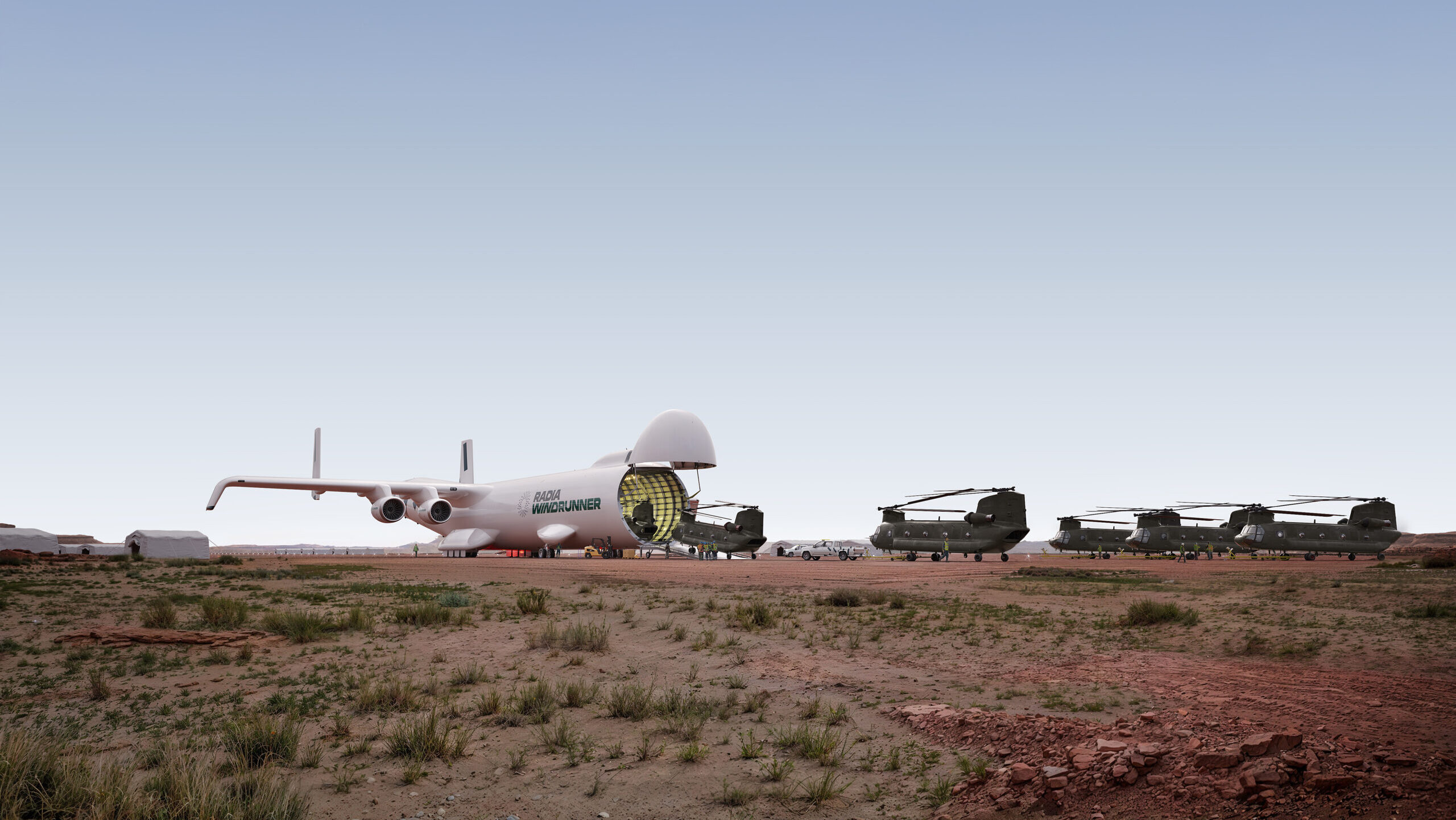
WASHINGTON — Roughly eight years ago, a handful of companies in the wind turbine business came to Mark Lundstrom with a problem: The towering blades needed for wind power are simply too large to move efficiently and require a new form of transportation.
Lundstrom’s solution? The world’s biggest airplane, dubbed the WindRunner, now under development by Radia, where Lundstrom is the founder and CEO.
Tip to tail, the WindRunner is set to measure 356 feet with a wingspan of 261 feet, according to the company. That’s longer than the 275-foot-long AN-225 Mriya, which previously held the title as the world’s biggest plane until Russia destroyed it during its invasion of Ukraine. The jet’s cargo length caps out at 344 feet, meaning it could one day carry equipment longer than a football field.
Competitors coming together to ask for an aerial solution for moving wind turbine blades “was enough to galvanize us to go ahead and raise money” to start engineering the WindRunner, Lundstrom said in an interview with Breaking Defense earlier this month. Working largely under wraps, the company emerged from stealth mode last year.
With the WindRunner’s target being onshore wind farms, Radia is designing the massive plane to land on unpaved dirt strips, making it easier to deliver turbine blades to austere locations. According to a press release from the company, the WindRunner will be able to take off and land from unpaved runways about 1,800 meters long, or just over 5,900 feet. Those qualities along with the plane’s formidable cargo volume — which Lundstrom said is 12 times that of an Air Force C-17 Globemaster — means “there’s a lot of pretty interesting military payloads that you can move as well.”
To that end, Radia engaged with the Defense Department, culminating in a cooperative research and development agreement (CRADA) with US Transportation Command announced by the company in May. Congress has taken notice too: The House Armed Services’ Seapower and Projection Forces subcommittee’s markup of the fiscal 2026 defense policy bill “commends” the CRADA, noting DoD’s lack of an airlift capability for cargo exceeding 300 feet in length. NATO countries in the Strategic Airlift International Solution partnership have also expressed interest and support for the aircraft.
Thad Bibb, a Radia executive and retired Air Force two-star used the ability to move CH-47 Chinooks as an example of what Radia envisions WindRunner being used for. Whereas a C-17 can carry just one Chinook with its blades disassembled, WindRunner would be capable of carrying six, fully assembled and able to roll off and enter combat immediately. The company envisions the aircraft can carry a range of military equipment, from fighter jets to rockets to missile batteries.
“So now it’s a huge force multiplier,” Bibb, who previously oversaw operations of the service’s mobility fleet as the commander of the 18th Air Force, said.
Importantly, Radia is designing the WindRunner to be optimized for, in Lundstrom’s words, an “obnoxious amount of volume,” not cargo weight. As a result, the WindRunner is expected to have a cargo weight capacity roughly equivalent to a C-17, though Lundstrom noted a constraining factor in moving cargo is typically volume, not tonnage.
WindRunner’s development now continues under a new Trump administration, which doesn’t share the green energy targets of its predecessor and has attacked the very existence of wind farms. Lundstrom, though, countered that much of the administration’s wind farm ire is directed at offshore turbines, and that onshore wind farming in the US is still growing, particularly amid an insatiable demand for energy driven by the AI boom.
Lundstrom stressed that Radia is designing the WindRunner with major tier one components already in production to ease the certification process, though he declined to specify key features like the engines the company has selected for the aircraft. Radia is aiming for the aircraft to fly and begin “initial operations” in the 2030 timeframe as the company works to wrap up full certification, he said.
The WindRunner will have “competitive pricing on a per unit basis,” Lundstrom said, though he did not share a pricetag. Along with customers procuring and operating the aircraft, Radia wants to offer the WindRunner’s services through other arrangements, such as government-owned and contractor-operated or completely contractor owned and operated missions.
Asked whether Radia plans to incorporate features like an air refueling receptacle that could extend the WindRunner’s range, Lundstrom said the company is focused on getting the plane operating as quickly as possible, with military-specific applications to come later.
“We’ve been very passionate about building the maximum capability in the minimum amount of time. And to do that, we realize that there’s some military systems that we’ll add on later, but we want to provide this capability in 2030 because the world needs it,” he said.



